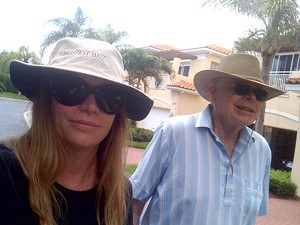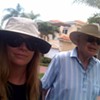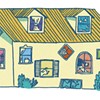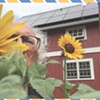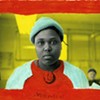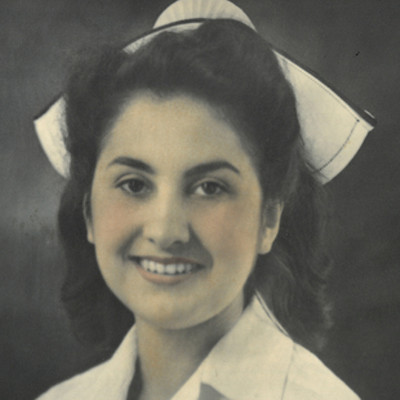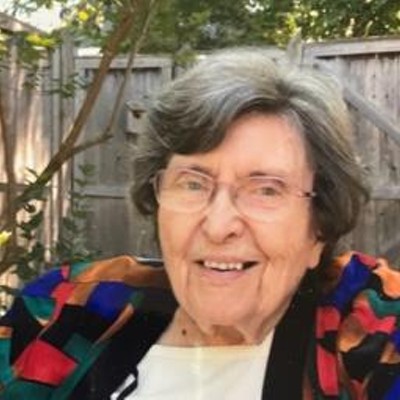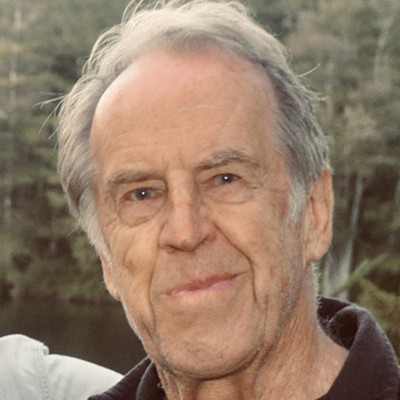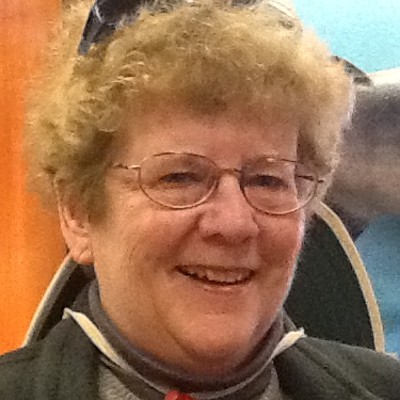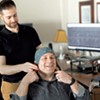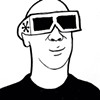Published June 23, 2010 at 4:16 a.m.
My father knew it was coming. Alzheimer’s disease had been on his radar ever since his own father died of the mysterious malady. Witnessing the catastrophic deterioration of a man whose mind had been sharp enough to work for General MacArthur in prewar Manila, my frightened father, Beauregard Bercaw, decided to become a neurologist. Perhaps the practice, and pursuit, of medicine could stave off what he believed was a genetic inevitability.
Beauregard’s fear reached epic proportions as he approached middle age, and he began to experiment on himself with supplements. By the time he was 60 — which was 12 years ago and before dietary supplements were so commonplace — my father was taking 78 tablets a day.
He tracked down anything that offered even the slightest possibility of saving brain cells and killing free radicals: omega-3, omega-6 and omega-9 fatty acids; vitamins E and C; ginkgo biloba, rosemary and sage; folic acid; flax seed; and many substances I had never heard of. He drank nothing but green tea, swore off sugar and even stopped using shampoos that contained sodium lauryl sulfate, which he called “toxic.”
Beau spent hours a day doing math. Even when I was visiting the home he shared with my stepmother in Naples, Fla., he’d sit silently on his leather recliner with a calculator in his hand to verify the accuracy of the long math he factored by memory.
What are you saving your mind for, Dad? I often wondered. I’m here now, waiting to talk with you.
But my father wasn’t interested in idle chatter. His prime pursuit was the solitary game of problem solving. Medicine and math had solutions; they just had to be found. The answer to Alzheimer’s was somewhere in his head … or so he thought.
On one of the occasions when I was visiting and he was doing equations, Beauregard looked up and stared at me.
“Promise me something, gal,” he said, using the same voice he would to address the Southern Clinical Neurological Society, an organization he founded and presided over for years.
“Anything,” I answered my father, who had once mortgaged our house to buy the first MRI machine in our town. He later filed an antitrust lawsuit against the hospital where he worked when the administration decided radiologists had the right to interpret test results instead of neurologists. My father lost that battle but gained the respect of his colleagues — even the radiologists — for his scientific passion.
“Swear on your grandmother’s Bible that you will put a gun to my head if I wind up like my father.”
He was dead serious.
How do you answer a man who watched his own father wipe feces on the walls of their Virginia farmhouse? A man who couldn’t tolerate seeing his loving mother bear the caregiving burden alone and sent his father to a respite home, where he died a short time later? A father who blamed himself for his own father’s death and was now asking me to kill him if the disease repeated itself despite his best mathematical and pharmaceutical efforts?
“Swear to me,” he said again. My father taught me to shoot on the farm where he grew up. He collected guns and kept them under lock and key. Everything was in place to make his wish a reality.
I put my hand on the aging, leather-bound King James Bible that had belonged to my great-grandmother Nannie Dunlap and my grandmother Nancy Scott.
“I swear,” I said, promising only because I knew it would bring him comfort.
“Good,” he answered, then set down the Bible and picked up a sudoku puzzle book. “Want some pomegranate juice?”
A few years later, my father and his wife, Nora, came to Vermont for a visit. Beau lugged a wheeled suitcase full of supplements into my house. He stayed up late the first night parceling out his pills for the week into Dixie cups: one heaping cup of supplements to be served with every meal.
“Gal, you should be taking these, too,” he declared one morning.
“Why?” I asked.
“Because you are my genetic clone.”
When I was very young, people would say, “You look just like your father.” To which I would always respond, “But I’m a little girl!”
Our physical resemblance and similar character traits are uncanny. We are a pair of tall, big-lipped, blue-eyed, loose-jointed, freckle-skinned, must-nap-in-the-afternoon, angst-ridden, globe-trotting Bercaws. Except for XX and XY chromosomes, nearly everything about us was a perfect match.
I wondered about the apolipoprotein E (APOE) gene found on chromosome 19, which can indicate a predisposing genetic risk factor. Which one did I get from my father?
Everyone inherits a copy of some form of APOE from each parent. APOE e2 is relatively rare and may even provide some protection against the disease. APOE e3 is the most common and appears to play a neutral role in Alzheimer’s disease.
“Those who inherit one copy of APOE e4 have an increased risk of developing Alzheimer’s,” explains the Vermont Alzheimer’s Association website. “Those who inherit two copies have an even higher risk, but not a certainty. Scientists do not yet know how APOE e4 raises risk. In addition to raising risk, APOE e4 may tend to make symptoms appear at a younger age than usual.”
I was only 34 when my father and Nora came to visit that summer. I didn’t want to be consumed by worry, as he had been all his adult life. What I wanted was to take them to the Shelburne Museum to show them a quilt exhibit and the famed Round Barn. I wanted us to stroll the grounds as if we didn’t have a care in the world. Couldn’t I think about Alzheimer’s later, maybe a decade or two down the road?
Nope.
We did enjoy a beautiful day at the museum. Beau was fascinated by the Round Barn. “I never saw one like this in Virginia,” I recall him saying. I later sent him a Warren Kimble print to remember it by.
In exchange, my father sent me the very expensive APOE genetic test kit and instructed me to have the blood drawn at my physician’s office, but to have the results sent directly to him. Turns out that I carry the APOE e3 gene — the neutral one, which means I may or may not get Alzheimer’s. My father is an APOE e3 carrier, too.
But now Beauregard has full-blown Alzheimer’s. A year ago, he had a CT scan that showed “brain atrophy consistent with the disease.” He looked at the film himself as he was wheeled out of the room — before the radiologists even had a chance — and was confused by what he saw. Whose brain is that?
The symptoms have been compounding ever since. Beau can’t remember when he last ate, so he eats all the time. The big man is now big bellied, too. His supplement regime — forgotten, for the most part — has been replaced with a combination therapy of the prescription drugs Namenda and Aricept. Nora must put the pills in his hand and watch him swallow. She has to stop him from taking them again a few minutes later.
Beau can still do sudoku puzzles and read books on his Kindle. He just can’t remember what day it is or which words he most recently uttered. His nap schedule — formerly 20 minutes after lunch, even when he practiced medicine — has increased to twice a day, for two hours at a time.
A few weeks ago, after spending six months in Singapore with my son and husband, I went to Naples to help Beau while Nora had surgery. For the entire first day I was there, my father hugged me every time he saw me come around a corner. “Gal, it’s so good to see you,” he’d say. These hugs were long, drawn-out embraces, quite unlike the sideways, one-armed versions he used to give.
I fed him. I gave him the pills. I cleaned up his “accidents.” I let him eat Skinny Cow Ice Cream Sandwiches. (I temporarily lost him in the grocery store when he struck out on his own to find them.) I watched FOX News with him. (That one hurt). I napped when he napped. I took him on daily visits to see his wife at the hospital, and stopped him from calling her every five minutes from home. I got the newspapers before he woke up so he wouldn’t wander outside alone. I wondered what happened to the calculator that had always been by his chair. Long math was long gone. The remote control was his device du jour.
While Beau watched a baseball game one afternoon, I walked into his den and eyed the wall of supplements he used to take — bookcase after bookcase of pills with names like “Memoral” and “Sharp Mind,” along with the standard vitamins and minerals. They were now brutal reminders of how valiantly he had fought to stave off this disease. It seemed symbolic that they were all past their expiration dates.
I rested my hand on the gun cabinet on my way out. Not gonna need any of you, either.
Several mornings during my caretaking time with him, I enlisted Beau to walk to the local coffee shop. The only thing he’d say on these walks was “The hibisci are in full bloom.” Every time he said it — there were dozens — I ruminated on whether the plural of hibiscus is, in fact, hibisci. I felt better thinking about innocuous things than the gravity of the situation.
On my final day in Naples, we took one last walk together. Beau didn’t mention the hibisci, though they were still blooming. I noticed his gait was off, and for a second I thought he might be having a stroke.
“Are you OK, Dad? You’re walking funny.”
“I’m just trying not to step on the cracks,” he said, perfectly seriously.
I giggled. Dear God, he thinks he’s a boy again!
He seemed especially distant that morning. Maybe he was back on the farm, or walking the halls of the University of Virginia. Wherever he was, he seemed happy there. But as we passed a particularly flourishing hibiscus tree, my father looked at me. That look. The one that means something big is coming.
“Gal,” he said, and then paused for a lifetime. “I sure appreciate you coming down to take care of me.” His voice quivered toward the end of the sentence.
I composed myself long enough to say, “It was a pleasure, especially after all you have done for me. Besides, you don’t need so much taking care of.”
My sunglasses masked my tears. As we walked on, my father would repeat this latest fixation every few minutes — with the same quiver in his voice in the exact same place. But each time, my emotions got bigger and my response got shorter, until I was the one who couldn’t find the right words.
Home in Vermont, a week before Father’s Day, I find myself back on Memory Lane at the Shelburne Museum. I’m sad down to my bones, as my dad used to say whenever a patient died.
I’ve come to the Round Barn to see “Alzheimer’s: Forgetting Piece by Piece,” a national quilt exhibit about the disease. With my first glance, I realize that a lot of other people are unraveling, too — victims, families, friends and caregivers. In fact, 5.3 million Americans are living with Alzheimer’s disease, and a new individual is diagnosed every 70 seconds, according to the Alzheimer’s Association. Nearly 11 million unpaid caregivers, like Nora, assist those living with the disease.
The Shelburne exhibit features 52 heart-wrenching quilted tributes, each partnered with a statement from the artist and a piece of information about Alzheimer’s disease. The quilts are displayed so the accompanying facts are in chronological order — from diagnosis to death. It occurs to me that the Round Barn itself is the perfect metaphor for a disease that makes the mind spiral. The Shelburne Museum has put its own imprint on the exhibit by partnering with Vermont Public Radio and the national StoryCorps Memory Loss Initiative to share oral stories from local Vermonters who are living with the disease, and their caretakers.
I listen to one, and it’s like I’m inside my father’s head.
“I hope I can keep myself the way I am,” says 79-year-old Robert Ferm to his wife, Sonja Olsen.
I hang up the phone at the listening station, and my hand is drenched with sweat. Fortunately, the museum has tissues placed throughout the exhibit.
The tapestries seem to tell my story, too — a patchwork that brings people together as things fall apart. In “Fading Memories,” by Virginian quilter Linda Cooper, washed-out daylilies represent “the fading reality that Alzheimer’s brings.” On the borders, she’s quilted sections of “normal neurons with occasional damaged nerves with the beaded amyloid plaques, seen in the disease pathology.” The accompanying text explains how those sticky plaques clump together, build up between nerve cells and “block cell-to-cell signaling at synapses.”
“The Crooked Path” by Diane Petersmarck from Illinois depicts her father’s winding, narrowing road to another world. Despite his shrinking reality, she feels “a tiny glimmer of joy” on those rare occasions “when he comes back to us.” Like when she was sitting on her father’s bed telling him she loved him. “I love you, too, Diane,” he said out of the blue, hugging her.
One quilt in particular rips my heart to pieces. “What If I Can’t Remember…” by Susan Gourley from Indiana features a mass of unclear, floating and fading images representing memories (as well as her mother and aunt). Around the edges, Gourley has written questions mothers might ask when faced with the possibility of forgetting their own children. The last lines are “What if I never again have the chance to remember who I was and who you were to me? What if I cannot remember that I loved you?”
I head over to the “Wish Wall,” where visitors can leave a message for a loved one with Alzheimer’s disease. I pick up a piece of colored paper. Hibisci pink. And I scribble a message to Beauregard Lee Bercaw.
I will never forget you.
Want to go?
“Alzheimer’s: Forgetting Piece by Piece” on view at the Shelburne Museum through Sunday, October 24. Info, 985-3346. www.shelburnemuseum.org
The Health & Fitness Issue
The arrival of summer in Vermont practically comes with a mandate to get outside and recreate. Need inspiration? Try Sarah Tuff's tale about her new workout: training for the biathlon. Kirk Kardashian hits the river with a merry crew of scullers, and Lauren Ober catches up with some truly obsessed two-wheelers. Victims of Lyme disease don't feel like doing anything at all; Ken Picard finds out why treating the debilitating illness is so controversial. Nancy Stearns Bercaw's essay about her father's Alzheimer's is inspired by an exhibit at the Shelburne Museum. And in the food section, Alice Levitt reports on her week of going meat-free, while Ken Picard interviews the outrageous cheese lady of Cabot. Read it all, in good health.
More By This Author
Speaking of...
-

More Vermont Seniors Are Working, Due to Financial Need or Choice. They May Help Plug the Labor Gap.
Apr 17, 2024 -

Bernie Sanders Sits Down With 'Seven Days' to Talk About Aging Vermont
Apr 3, 2024 -

Rep. Anne Donahue Is Determined to Find Out Where Patients of Vermont’s Old Psychiatric Hospital Are Buried
Mar 20, 2024 -

Getting On: An Aging Population Is Transforming Vermont’s Schools, Workplaces and Communities
Mar 6, 2024 -

Bracing for a Property Tax Hike, Lawmakers Drop Bid to Give Themselves Raises
Feb 15, 2024 - More »
Comments
Comments are closed.
From 2014-2020, Seven Days allowed readers to comment on all stories posted on our website. While we've appreciated the suggestions and insights, right now Seven Days is prioritizing our core mission — producing high-quality, responsible local journalism — over moderating online debates between readers.
To criticize, correct or praise our reporting, please send us a letter to the editor or send us a tip. We’ll check it out and report the results.
Online comments may return when we have better tech tools for managing them. Thanks for reading.



































